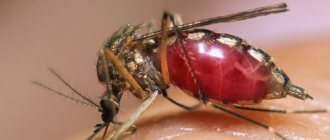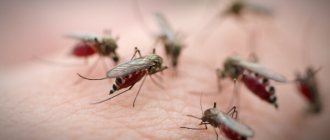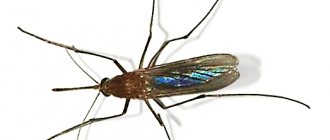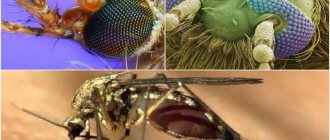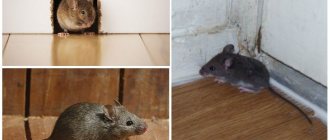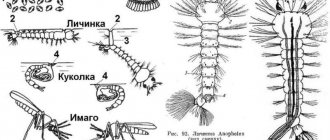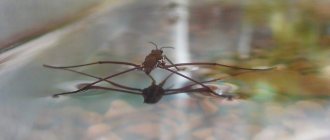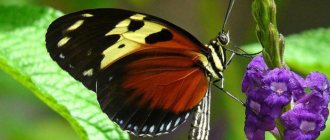The shrew (shrew, shrew) is a mouse with a long nose from the shrew family and the order of insectivores. Mostly they can be found in garden beds, in a summer cottage or in a garden. It is here that there are a lot of different insects, which are the main food of the animal.
These small pests bring a lot of trouble to gardeners and summer residents. We will tell you how to deal with them in another article, and in this one we will give a brief description of them, pictures and photos.
Let's figure out who this animal is, what it looks like, where it lives and what it eats.
Since they do not like to show themselves to people, it is quite difficult to see them. Only the efforts of a cat, which catches them and scatters the bodies throughout the area, will help you understand that they have settled on your site.
If you look closely at the garden shrew, you can determine that it is not very similar to a mouse - we will talk about the main differences in this article. Cats don't eat them because they give off an unpleasant odor thanks to their musk gland.
Like all rodents, these animals live in burrows. They feed on animal food. Due to the fact that their metabolic process is intense, they do not live long without food, only 7 to 9 hours, therefore, shrews are constantly looking for food and even eat much more than their weight.
Shrews and shrews live in our areas. The main distinguishing feature between them: the former have brown tips, while the shrews have white tips.
Description
In appearance, the shrew only slightly resembles a mouse. Moles also somewhat resemble her. The main difference from moles is their elongated proboscis and tail. In temperate latitudes, two species are common: the pygmy shrew and the tiny shrew. Representatives of the second species have taken root in our country more.
Distinctive features and characteristics of the animal:
- the rodent has an elongated head with a movable thin proboscis;
- small body with short hair of a dark brown color with a grayish tint, measuring approximately 30-50 mm;
- the tail is slightly longer and thicker than that of mice;
- garden shrews are very mobile and nimble, they run quite quickly, and they dig labyrinths and tunnels underground, just like moles;
- Basically, the animal lives in mid-latitudes. The shrew loves moist earthen areas where it can find provisions for itself - this is a dacha, a vegetable garden, a garden, and sometimes it can penetrate into a country house.
- The little pest's diet does not include plant foods - these are various insects, amphibians, lizards, and worms. However, a rodent can also damage garden plants.
Appearance [edit | edit code]
These are small animals, similar in appearance to mice, but with an elongated muzzle in the form of a proboscis. Shrews include the smallest representatives of the class of mammals - the dwarf shrew ( Suncus etruscus
) and the tiny shrew (
Sorex minutissimus
), in which the body length lies in the range of 30-50 mm, and the weight ranges from 1.2 to 3.3 g [3]. The head of shrews is quite large, with an elongated facial section. The nose is extended into a movable proboscis. The eyes are very small. The limbs are short, 5-fingered. The fur is short, thick, velvety. The tail is from very short to very long, longer than the body.
The skull is narrow, long, pointed in the nasal region. The brain region is expanded, a unique feature among mammals. The brain makes up 1/10 of the body weight, which exceeds the data for humans and dolphins. The zygomatic arches are absent (a rare occurrence among mammals). Teeth - 26-32. The front incisors, especially the lower ones, are greatly enlarged. The replacement of baby teeth with permanent teeth occurs during embryonic development, and cubs are born with a full set of teeth.
The genital and anal openings are surrounded by a skin ridge. On the sides of the body and at the root of the tail there are usually special skin glands that produce a secretion with a pungent odor. Females have from 6 to 10 nipples. The testes in males are located inside the body. The copulatory organ in adult males is very large - up to 2/3 of the length of the body.
Varieties
Today, scientists count more than 350 species of animals, which belong to 24 genera, and those, in turn, are united into three families:
- shrews;
- shrews;
- mouse shrews.
Let's look at some types of small rodents.
Pygmy shrew
This is a small animal with an elongated nose, its fur coat is gray-brown. The tail is covered with pronounced small fibers.
The length of the dwarf shrew is 4-5 cm. The animal has quite sharp teeth. Other names for this species: Etruscan shrew or multi-toothed baby. It can be found in the European mountains.
Common shrew (forest)
One of the common varieties of shrews. She also has her proboscis extended forward. The size of the rodent is 5-7 cm, the tail is 6-8 cm long. The color of the fur is dark brown, the tummy is light.
The forest shrew is common in the north of the European continent. Lives in thickets, under forests, and also in garden plots.
Woody (dwarf tupaya)
The most distinctive feature of the tree shrew is its tail. It is slightly longer than the body of the dwarf tupaiti, even with the head together. The weight of the animal is approximately 45 g. The fur is grayish-brown with white spots on the abdomen.
The tree shrew is listed in the CITES Red List (Appendix II).
Lives in Kalimantan and Sumatra, Borneo, Malaysia. Most often found on plantations and gardens.
Water shrew (common shrew)
The water shrew is one of the largest representatives of this species. An adult animal can reach 13 cm in length, the weight of the rodent is about 8-20 grams.
The water shrew's fur is velvety, black in color, quite thick and practically moisture resistant. The muzzle, like all representatives, is elongated. The shrew's bristly legs help it swim.
This species inhabits mainly Norway, France, Sakhalin, the Scandinavian Peninsula, and Asia.
Elephant (jumper)
The elephant shrew is also a miniature animal that lives in Africa. Her fur is red-brown in color. Thanks to its long hind legs, the animal can run quickly and jump to a height of more than one meter.
There are 16 individuals of this subspecies on the African continent.
Arctic
The Arctic shrew lives in the tundra in Central and Eastern Siberia.
Individuals of this species are medium in size, but have a more massive build.
The length of the animal is 48-72 cm (with head). The muzzle also has a short proboscis. The northern part is predominantly inhabited by short-tailed shrews with two-colored colors.
Arctic shrews have a dark saddle on the back, and the sides of the body are light.
Taxonomy [ edit | edit code]
There are more than 350 species of shrews, belonging to 24 genera, grouped into 3 subfamilies: shrews, shrews and mouse shrews. In terms of the number of species, the shrew family ranks fourth among mammals - after mouse, hamster and smooth-nosed bats.
The shrew subfamily is Crocidurinae. Their teeth are completely white. They are found mainly in Africa, southern Europe and Asia. The genus of shrews is the most numerous among the genera of mammals. 9 births.
The shrew subfamily is Soricinae. These shrews have brown tips on their teeth. They are found mainly in North America, Europe and northern Asia. About 14 births.
The subfamily of mouse shrews is Myosoricinae. They live in Africa. 3 kinds.
In the fauna of Russia there are about 25 species of shrews belonging to 4 genera: shrews ( Crocidura
), puthoras (
Diplomesodon pulchellum
), shrews (
Sorex
) and shrews (
Neomys
).
What does it eat?
Now let's tell you what rodents eat. These omnivorous animals feed on various insects, larvae, worms, spiders, wood lice and even frogs, lizards, and small specimens of other rodents. Everything that the shrew has not eaten is stored in its nest underground.
The shrew searches for food using its proboscis-like nose and sense of touch; Some species are even thought to have echolocation.
As we have already said, in animals the metabolic process is intense. Therefore, every day they need to eat an amount of food that is twice their body weight.
The animals eat constantly, always looking for food and gnawing on something. They even sleep little because of this.
The number of sleep breaks depends on the size of the rodent - the smaller the pest, the more often it sleeps. They do not hibernate during the winter.
Natural enemies of shrews
Photo: Great Shrew
Shrews' small size makes them vulnerable to many larger animals. They often become victims of both nocturnal and daytime birds of prey. Weasels, ferrets and other small predatory animals can feed on shrews. They often become victims of attacks by foxes and ordinary cats and dogs.
These animals confuse shrews with mice, but, having taken such prey into their mouths, they immediately feel their mistake and often refuse such a snack. It's all about the fetid musky aroma that insectivores emit; because of it, many predators eat shrews very reluctantly and only when there are no other options for food.
One of the enemies of shrews is a person who destroys these animals, considering them pests of fields, gardens and vegetable gardens. Of course, the shrew is capable of damaging the root system of cultivated plants in pursuit of any insects, but it also brings great benefits to the land. With its proboscis, the animal skillfully loosens the soil, which is saturated with oxygen, while at the same time the shrew destroys entire hordes of harmful insects and their larvae.
Interesting fact: shrews destroy a large number of insect pests, even in places where birds cannot reach them.
Unfortunately, people see only harm in the activities of shrews, although this is not at all the case. Among other things, many shrews die during the difficult winter period due to lack of food, rarely surviving until warmer times.
Burrows
This insectivore lines its nest with grass and leaves. Each shrew “guards” its territory - the area can reach several tens of square meters.
The miniature shrew disrupts the structure of the earth by digging various underground passages underground. The length of the passages can reach several tens of meters.
Minks and nests of animals damage the roots of vegetable crops, as well as fruit plants, thus destroying the crop.
Therefore, it is necessary to deal with these uninvited tiny guests.
This is what a shrew's hole looks like.
Lifestyle and nutrition [edit | edit code]
Shrews are distributed almost throughout the globe, with the exception of the polar regions, Australia, New Guinea, New Zealand and South America south of Ecuador, Colombia and Venezuela. They inhabit a wide variety of landscapes - from lowland and mountain tundras to tropical forests and deserts. In the mountains they rise to 3000-4000 m above sea level. Most species prefer to settle in damp places; some lead a semi-aquatic lifestyle. They stay alone. They dig holes or occupy the holes of other animals (moles, mouse-like rodents); They also settle in the voids of stumps and fallen tree trunks, under dead wood, and less often in human buildings. The nest is lined with dry leaves and grass. Each shrew has its own hunting area, several tens of square meters in size.
Shrews are omnivores, but eat mainly insects, their larvae and earthworms. They can attack small vertebrates: frogs, lizards, young small rodents. Food is found using smell and touch; some species are supposedly capable of echolocation. Shrews have a very high metabolic rate. Every day they need to consume an amount of food that exceeds their own weight by 1.5-2 or more times. Therefore, shrews feed almost continuously, and their sleep breaks are very short. The smaller the shrew, the more periods of sleeping and feeding there are during the day; Thus, in the tiny shrew ( Sorex minutissimus
) days are divided into 78 intervals. A shrew left without food quickly dies: small species - in just 7-9 hours (small shrew in 5.5 hours). Shrews do not hibernate, but with a lack of food, short-term torpor may occur with a decrease in body temperature.
Short-tailed shrew ( Blarina brevicauda
), living in the USA and Canada, and the common shrew, also known as the water shrew, or waterfowl (
Neomys fodiens
), living along the shores of reservoirs in Russia, are among the extremely few poisonous mammals, along with the platypus and slittooths.
Footprints
Traces of animals are best visible before winter - when the first snow falls on the ground. During this period, rodents crawl out of the ground and look for food.
Unlike mice, shrews have 5 toes on their front paws, so the tracks of these animals can be distinguished from the paw prints of other rodents.
Externally, the tracks of the shrew are similar to the tracks of a small vole. They can be in the form of paired lines or in the form of a trapezoid. The paw prints of the shrew are different, which sometimes hurriedly minces, sometimes moves in leaps.
1. Jaw of a common shrew (teeth with red-brown tips). 2. Nest. 3. Small, five-toed shrew tracks. 4. Tail print. 5. Compacted tunnels.
Small, five-toed tracks of shrews are clearly visible in the snow.
Video “Description of the shrew”
From the video you will learn a lot of interesting things about the shrew.
Mouse-like shrews are active at any time of the day. Their fur is soft and silky. The color of their fur can be grayish, yellowish, brownish-brown and even black, their body is from 6 to 11 cm long, and their weight is only about 23 g.
American shrews are quite large compared to other shrews, have a short tail and powerful limbs. These animals are poisonous and have dark fur.
Forest shrews are small in size, but their fur is very pleasant, long and beautiful. Its shade is predominantly gray. The body length of this variety is no more than 10 cm, and the weight is from 3 to 12 g.
The Ugandan armored shrew has a unique skeleton in its structure. The length of its body can reach up to 15 cm, and the animal weighs 110 grams. The coat is rough, but quite thick, the color of the fur is gray.
Interesting fact: thanks to the amazing structure of the armored shrew's skeleton, the animal can overcome enormous loads on its body, which are a thousand times greater than the weight of the shrew itself.
Cubs
Rodents begin to multiply intensively after winter. The shrew bears offspring for 14-21 days and usually gives birth to 5 babies. She hides her nest in a secluded place between the roots of trees.
When the cubs get a little stronger, they slowly begin to get their own food - their mother teaches them this.
Just three weeks after birth, little shrews leave the nest and scatter in all directions.
During her short life, a female shrew can produce even up to three generations.
Reproduction of representatives of the shrew family
Mice that dig in the soil reproduce after surviving the winter. Pregnancy usually lasts about 2-3 weeks. In one litter, the female brings up to 5-6 cubs. The female hides her children in specially equipped burrows.
At the age of three weeks, the young leave the burrow and disperse throughout the territory. At this moment, the animals weigh only 5-6 grams. By autumn, their weight increases to 10 grams. Some members of the shrew family do not survive the winter, and the goal of the survivors is to survive the winter and reproduce the following spring. Females live longer than males by 1 month.
Shrew species
Today, about three hundred species of shrews are known, but the most common are the shrew and its subspecies, the shrew and its varieties, as well as elephant and water shrews. The tiny shrew is the smallest representative of mammals, and its body length does not exceed 30-50 mm. The animal owes its name to the brown enamel located on the tips of the teeth and protects them from grinding down too early. The shrew's fur also has a brown tint.
The dwarf shrew or shrew is a prominent representative of insectivores and is distinguished by the white color of its tooth enamel. Body dimensions do not exceed 70 mm. This animal is relatively rare and is characterized by a gray coat color. The largest representative of shrews is the giant shrew, reaching a body size of 15 cm with a tail length of 10 cm. The color of the shrew's coat varies from light gray shades to almost black.
Water shrews or common shrews are large insectivores that prefer to settle on the banks of natural fresh water bodies. A distinctive feature of the structure of these aquatic animals is the presence of hard hairs on their paws, which ensure efficient movement in the water. In addition, the mammal has a waterproof coat. In appearance, the animal resembles an ordinary water rat of a grayish color with a lighter shade in the abdomen.
Mouse-like shrews are active both during the daytime and at nightfall . The fur of such shrews is silky and very soft, and the color of the coat varies from yellowish-brown and gray to black. The body length is approximately 60-110 mm, with a weight of up to 21-23 g. American short-tailed shrews belong to a group of relatively large and poisonous shrews with a relatively short tail, thick legs and dark-colored fur.
Wood shrews are relatively small in size, and their body length, as a rule, is 45-100 mm, with a weight ranging from 3-12 g. The total length of the tail varies markedly. The animal has long and silky gray fur on the upper part of the body and a slightly lighter lower part.
The anatomical features of the Ugandan armored shrew allow such an animal to easily withstand enormous loads on the body, exceeding its mass by a thousand times.
The Ugandan armored shrew differs from other mammals in its unique skeletal structure. This genus was considered monotypic for a long time, but in 2013 the Tora shrew, which has the same features, was described. The body length of an adult is 12-15 cm, with a tail length of 7-10 cm and a body weight of 110 g. Coarse and thick wool has a characteristic gray color.
Where does the shrew live?
Photo: Animal shrew
Various species of shrews have settled throughout our planet. They live almost everywhere, they can not be found only on the Australian continent, in the polar regions, New Zealand and New Guinea, as well as in parts of South America, which are south of countries such as Venezuela, Ecuador and Colombia.
These insectivorous creatures adapt to life in various territories:
- On flat areas;
- In mountain ranges (up to 4 km altitude);
- In deserts and semi-deserts;
- In tropical rainforests;
- In wetlands.
Each animal has its own domain, the territory of which it vigilantly guards to avoid encroachment by uninvited guests. If someone has invaded the shrew’s allotment, then a struggle for the hunting area begins, the outcome of which can be fatal for one of the rivals. Shrews enter into fights not only with their own kind, but also with mice and lizards.
Burrows serve as a refuge and home for shrews, but they themselves dig them infrequently, but try to occupy someone else’s hole left by someone else. If they have to dig their own shelter, they make it shallow.
Insectivorous creatures love the hollows of rotten trees, where they also set up their homes. In their dens, shrews make soft and comfortable bedding from last year's leaves. We can say with confidence that shrews are sedentary animals that adhere to a certain territory throughout their short lives.
How to detect the presence of a shrew
Burrows and passages of the shrew The first signs of the appearance of a shrew - dug "underground tunnels" and piles of dug up earth - gardeners can confuse with moles or dug-out mice-voles.
Each animal has its own area of up to 30-50 square meters. m and lives alone, not allowing neighbors into its territory. If there is a greenhouse on the site, then the shrew will definitely visit it, getting inside through underground passages. To make sure that it is shrews that have settled on the site, you need to see them, but this is very difficult to do because of their size. Their burrows are very small, and their nests are either in holes or in old trees. The bottom of them is lined with grass and leaves for insulation. Burrows and underground labyrinths have a smaller diameter compared to mole tunnels.
On a note!
If, in addition to the excavated soil, tubers are damaged, or the roots of garden crops or trees are gnawed, then the culprit cannot be a shrew, because it does not eat plants.

